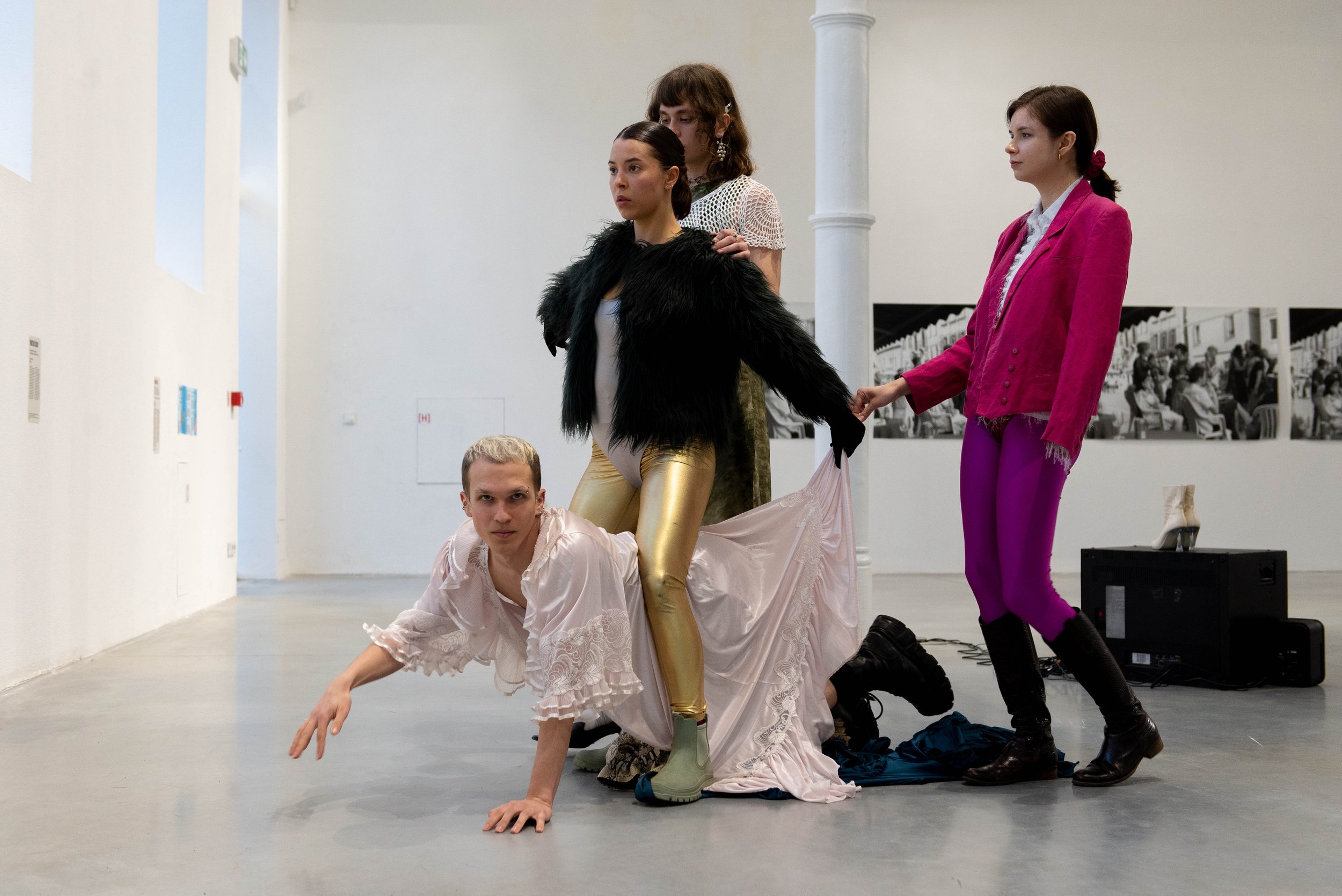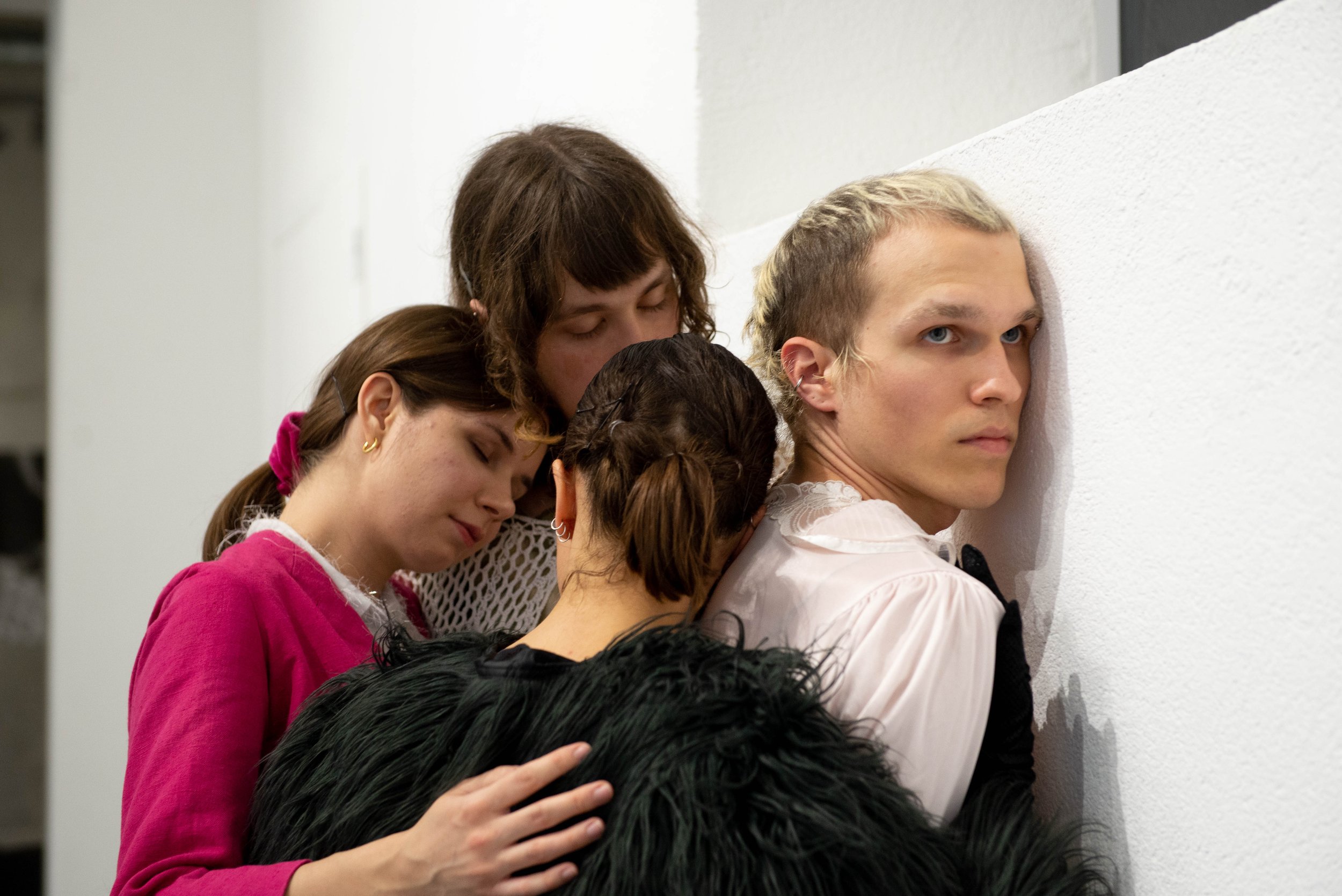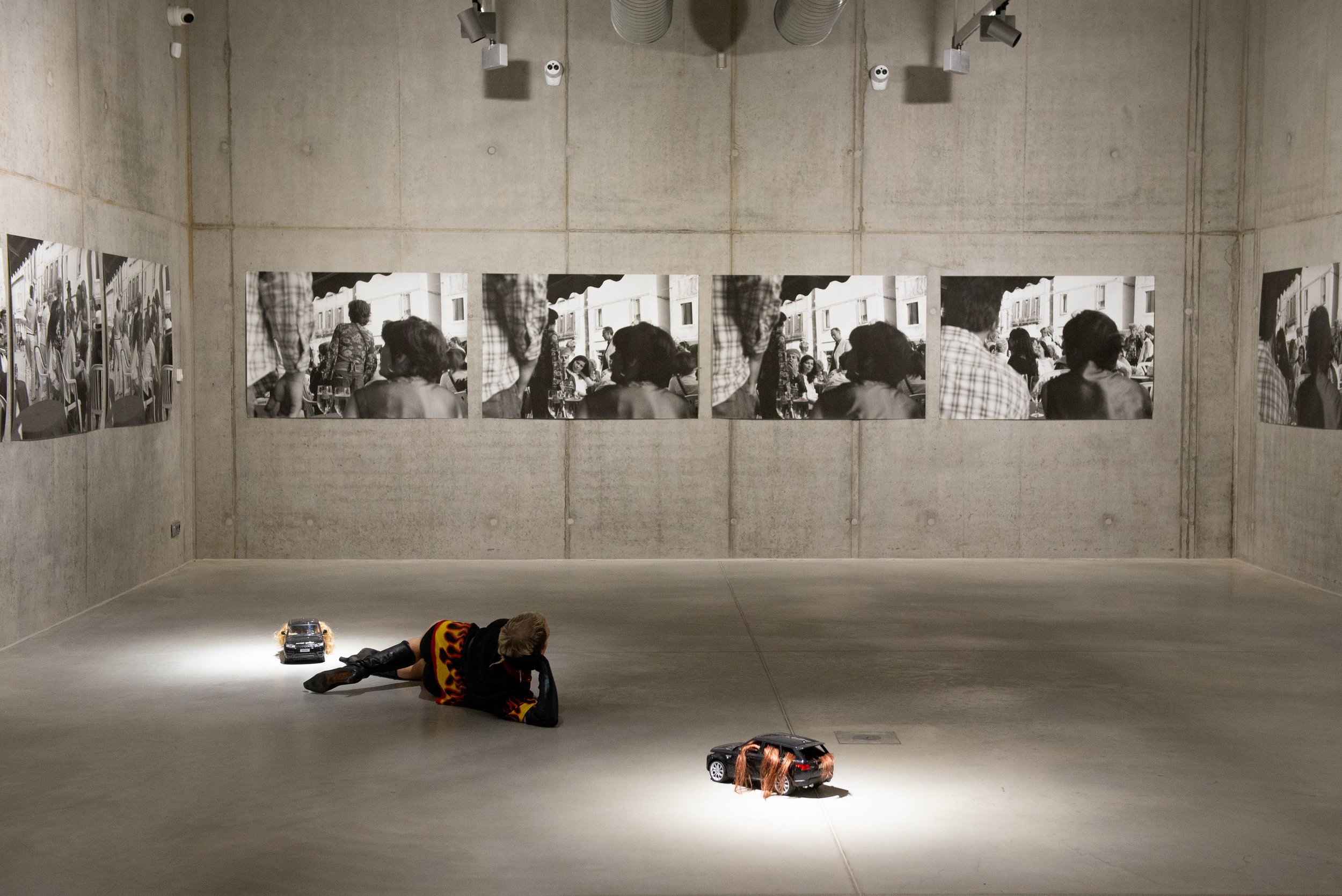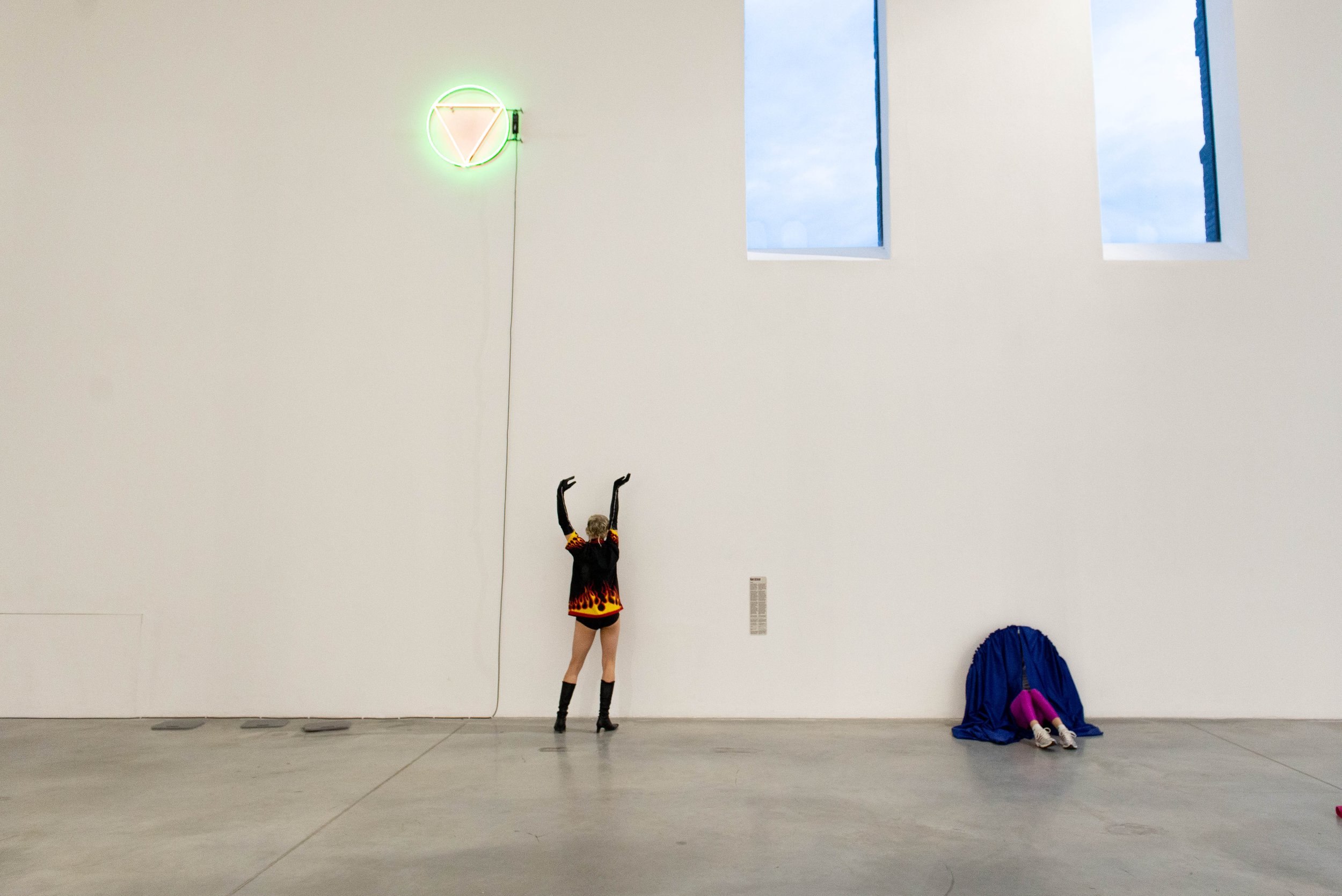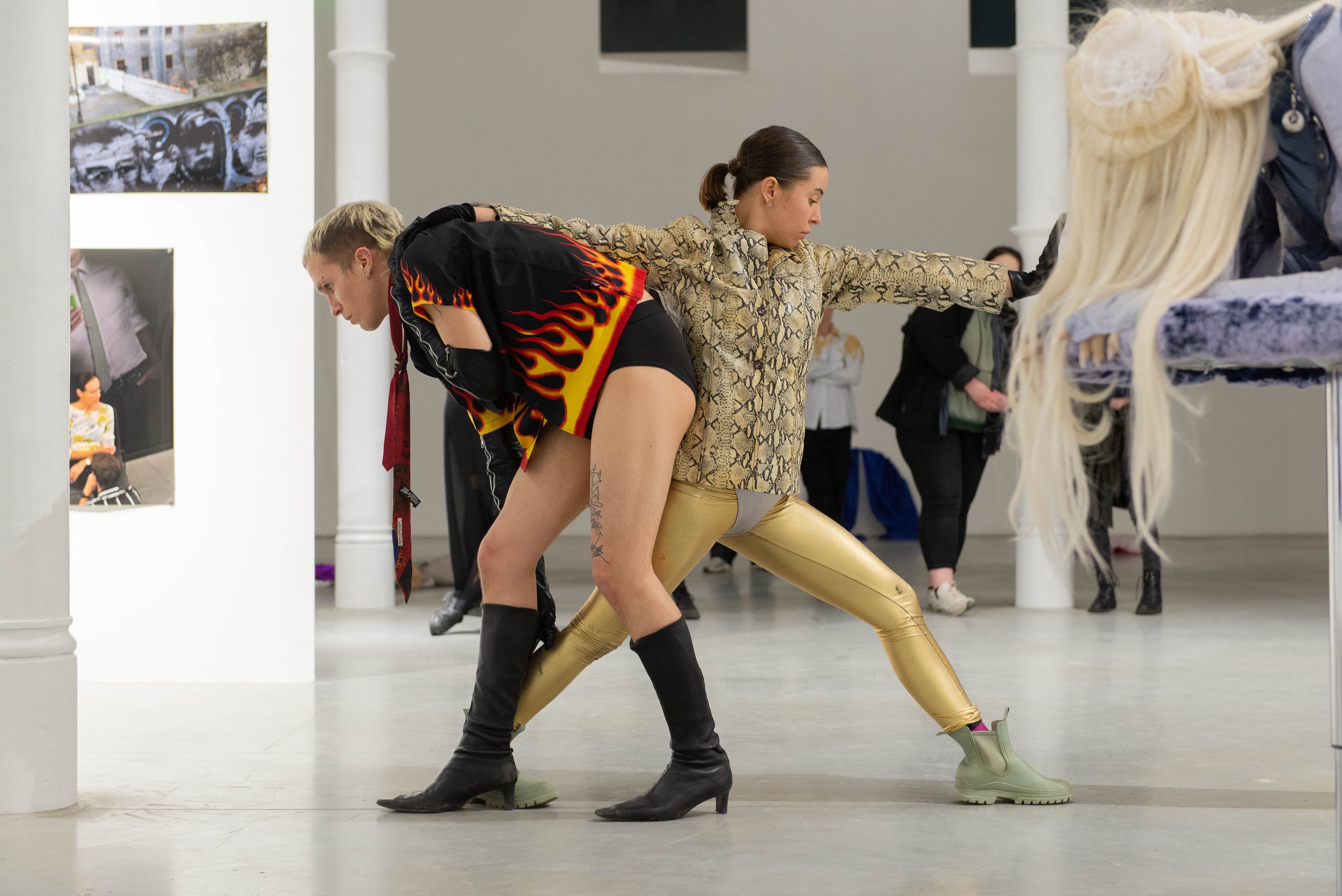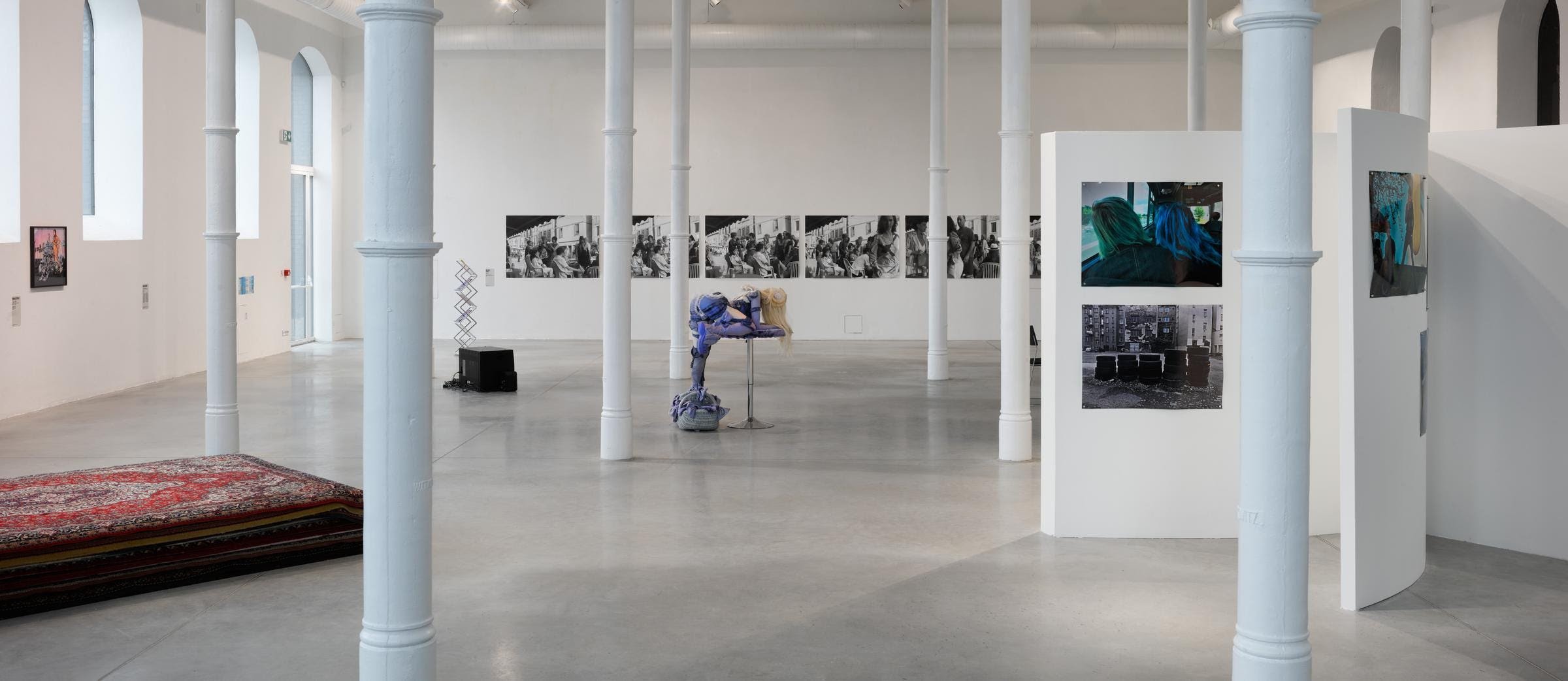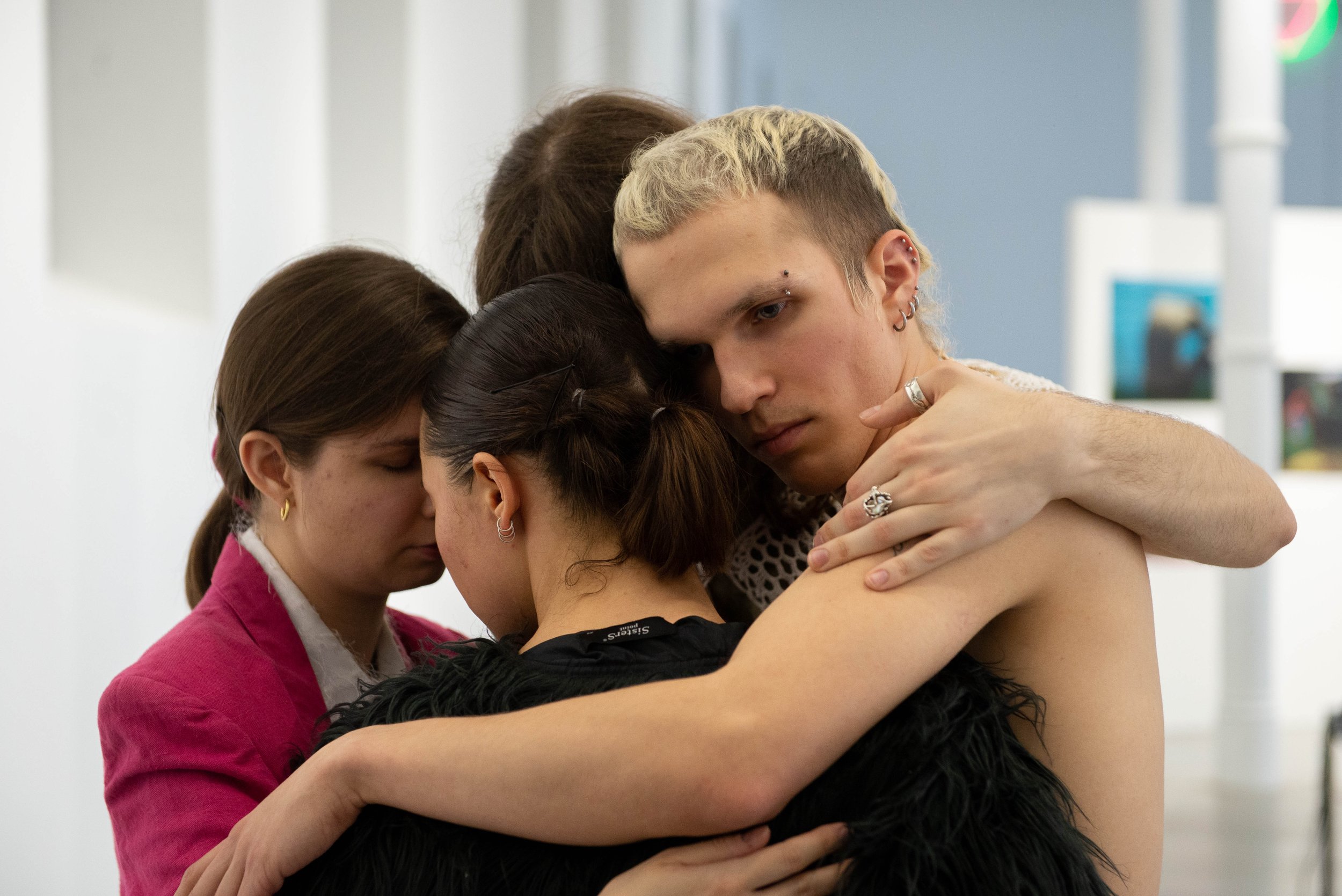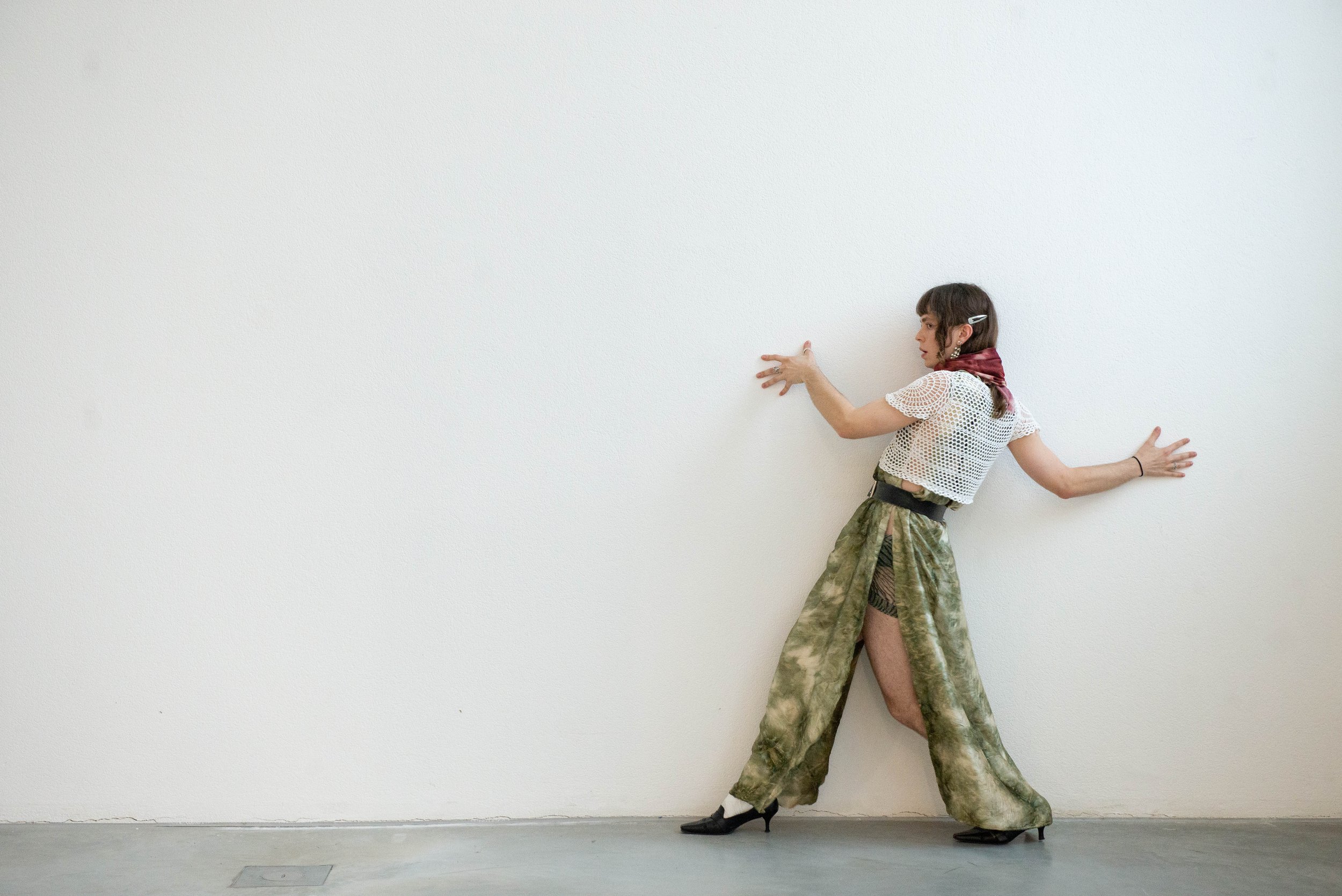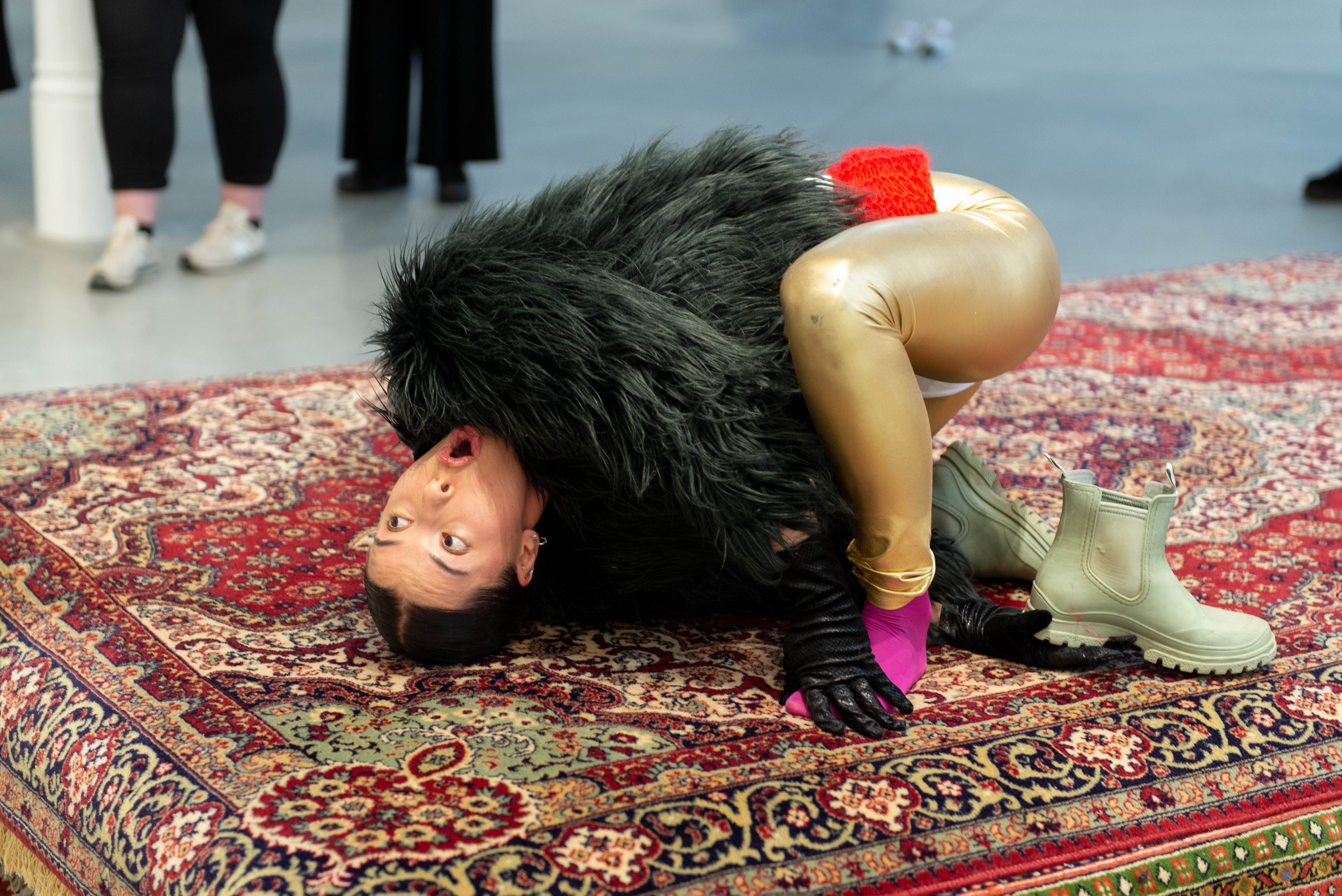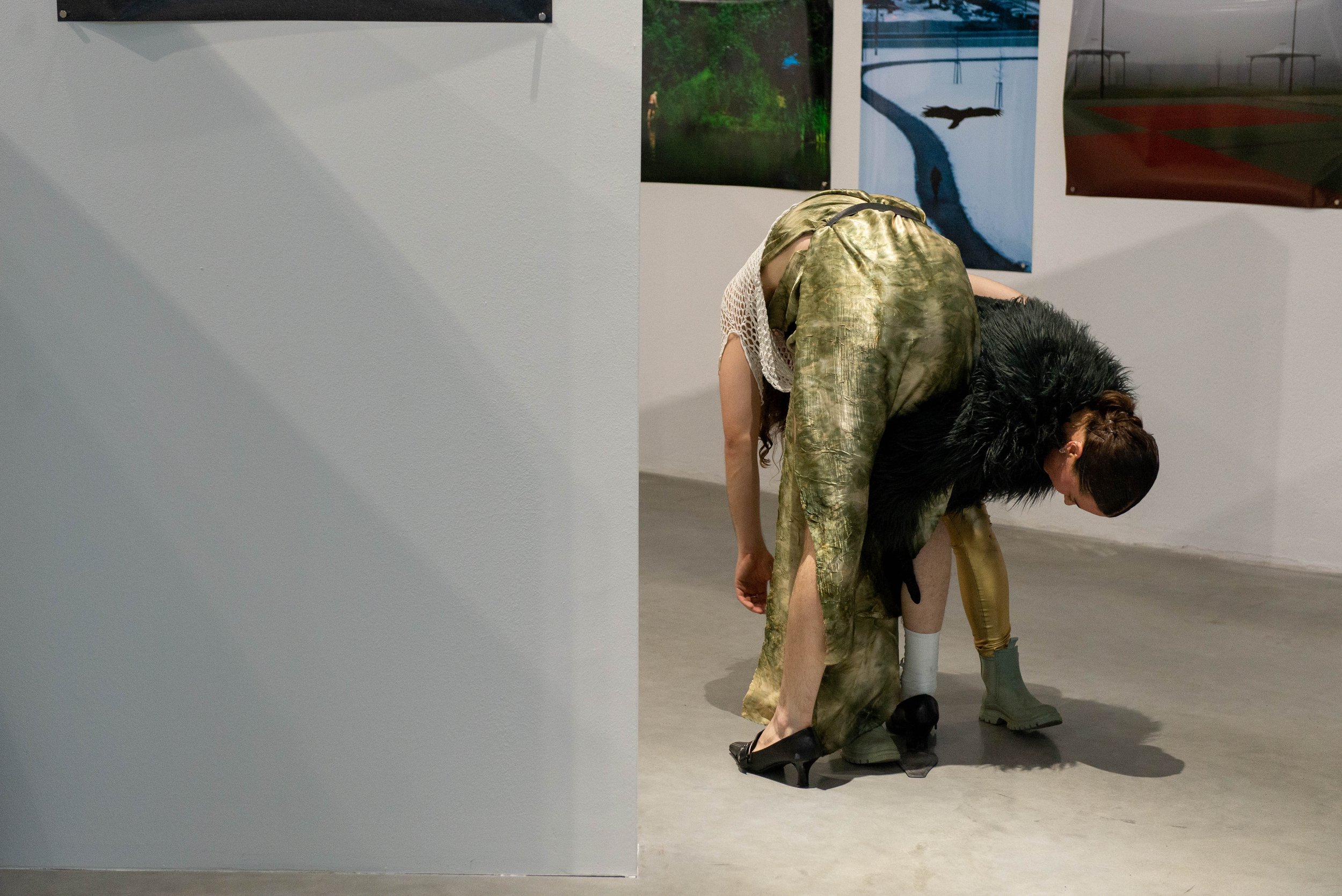Kem School x PLATO Ostrava
We responded to an invitation by PLATO Ostrava to contribute to the public program of the exhibition They Thought We Were Alive and They Run Screaming, by sending a group of Kem School alumna, mentored by Ania Nowak, to research and perform there. Find out more below.
fot. Dominika Goralska
During a process lasting just 6 days, a group of 4 Kem School alumna performers - Nadia Markiewicz, Piotr Szczęsnowicz, Jagna Nawrocka and Stefa Gosiewsk, under the watchful and tender mentorship of Ania Nowak, met to conduct research on self-staging - understood as strategies undertaken to construct identity and style one's own existence - in a collaborative, embodied and choreographic process. Each of the performers involved brought with them their own ideas and imaginings about self-staging, which they activated through choreographic scores - simple, short instructions designed to embody, activate or transform theoretical knowledge. After a collective exchange of fantasies, the artists tried to synthesize and design a structure that would combine their variations into a single living organism of dispersed intelligence.
The format that organically emerged from their interaction and most adequately reflected the content of the research was a 3-hour performative installation. One of the key elements of this work, was to address the context of the exhibition and the specific works that were in it. The exhibition, They Thought We Were Alive And They Run Screaming, is built around a sense of melancholy - a condition that is often caused by a percieved dissonance, between how others see us and how we 'stage ourselves'. Strolling among the works of Anna Uddenberg, Martha Rosler, Nina Beier and Katarzyna Kozyra (among others), the viewer can see reflections of their own struggles with constructing identity, exploiting the tools of self-stylization and being observed by others at the same time. In the course of their actions in the exhibition space, our performers let themselves get ‘infected’ by the works, allowing the feelings they contain to flow down to them and inspire further choreographic actions.
fot. Martin Polak
The final 3-hour performance work, rich with themes, layers and nuances, is hard to reduce to a description in a few sentences. However, if we were to try, we would say that it was a constantly researched and re-rehearsed world, in which difference, similarity and hybrid intimacies conditioned the emergence of new structures and models of social interaction. With the help of such tools as the grotesque, post-anthropocentric hybrid, circus aesthetics, perception, slow dance, shenanigans, amoebism, flickering and anarchitecture, among others, our performers created and spread images of melancholy.


